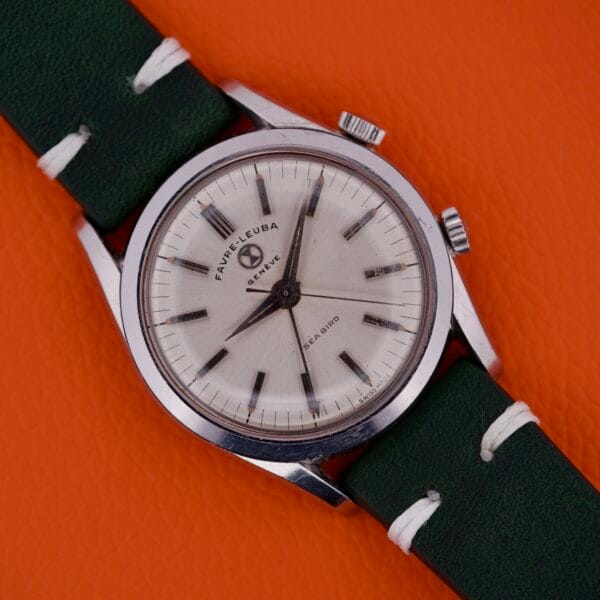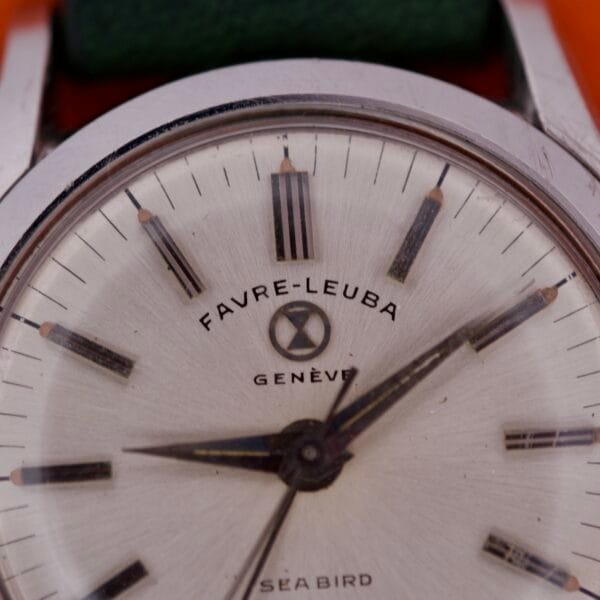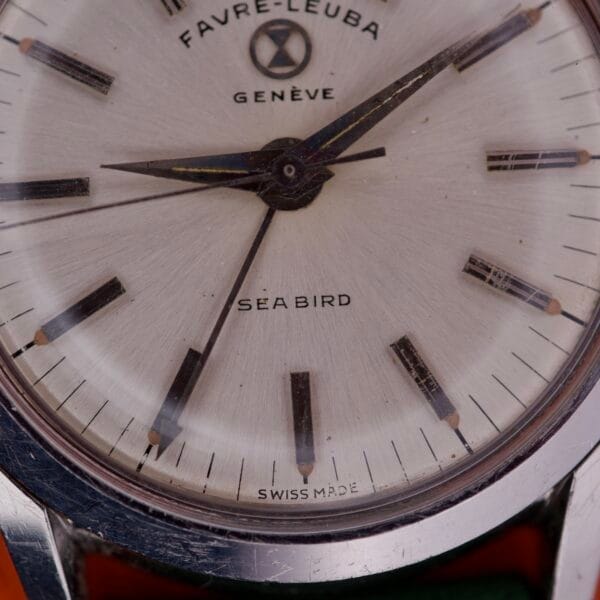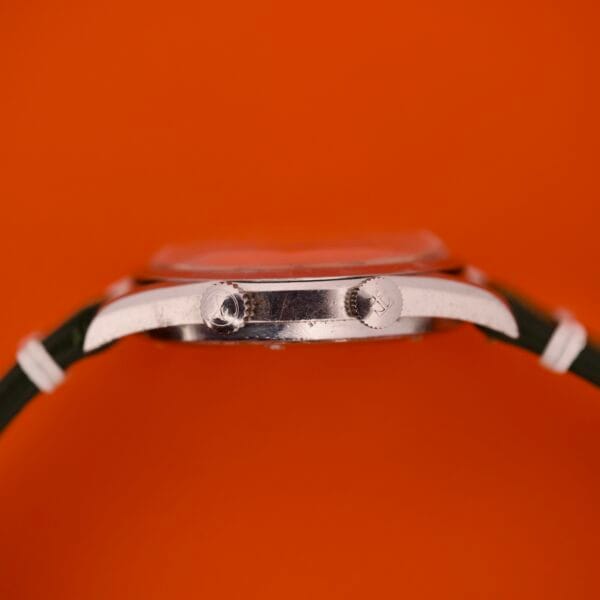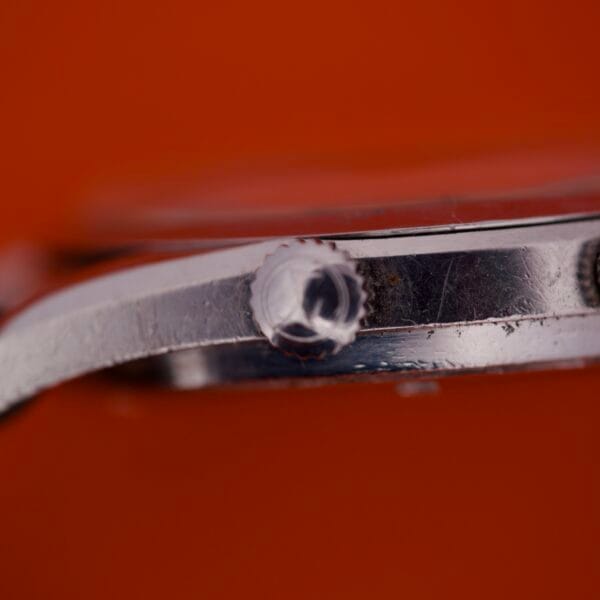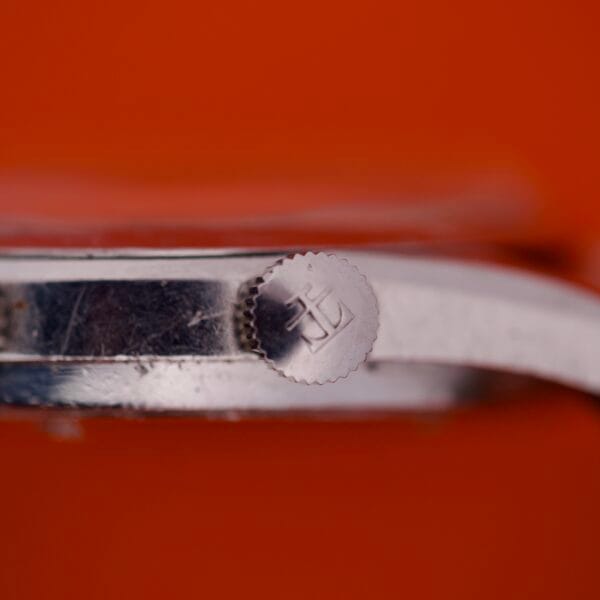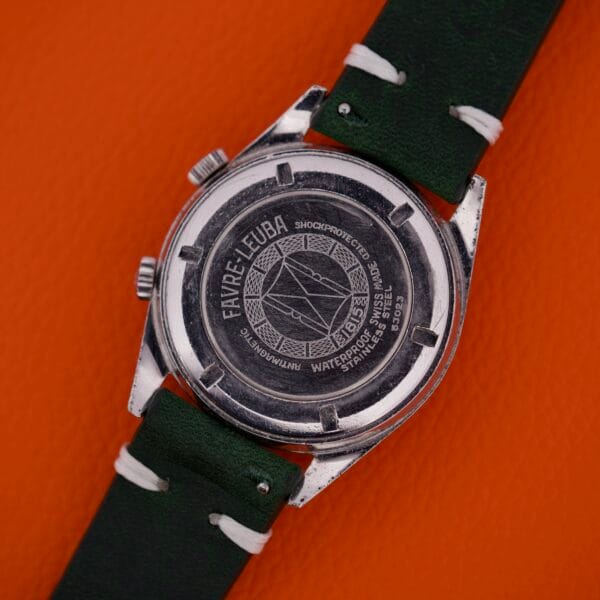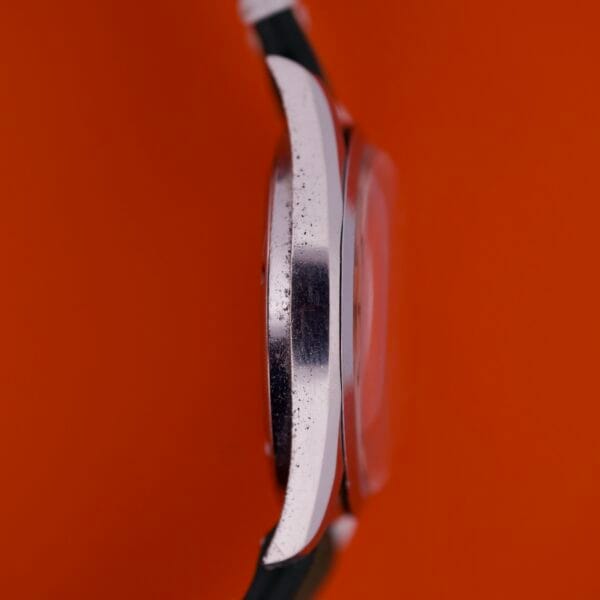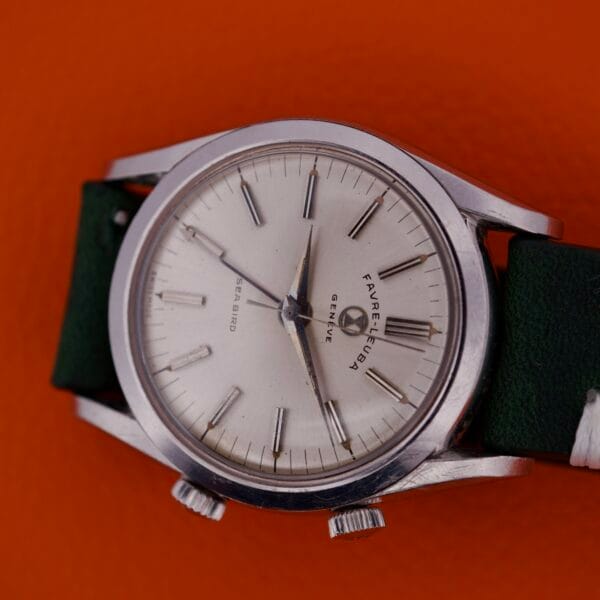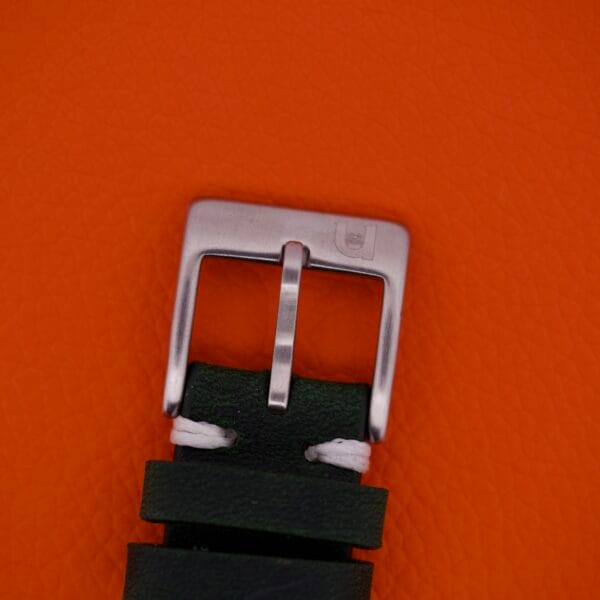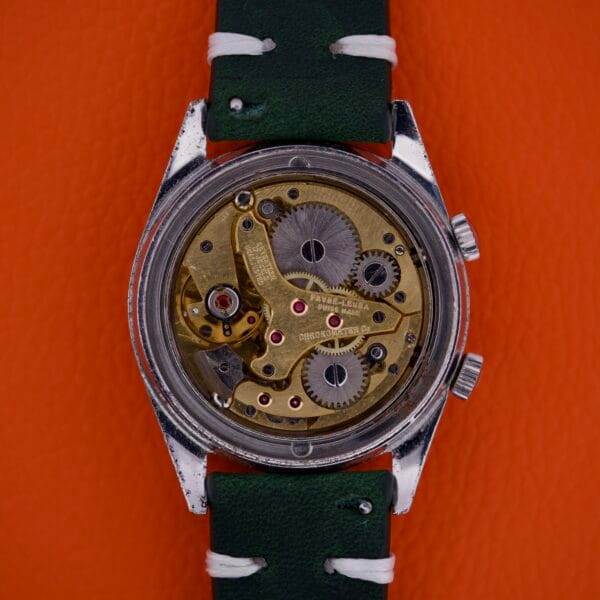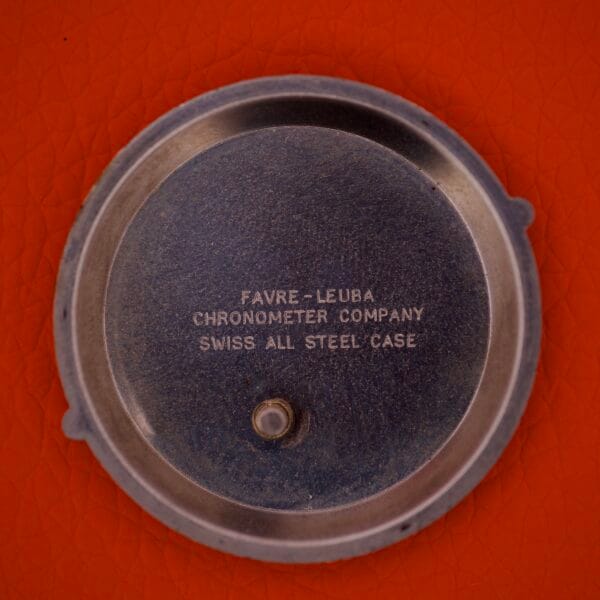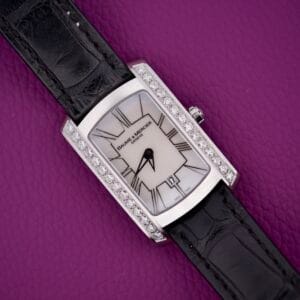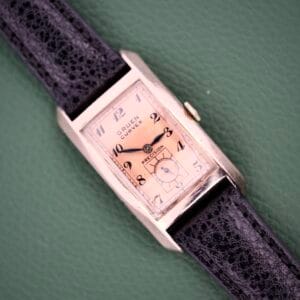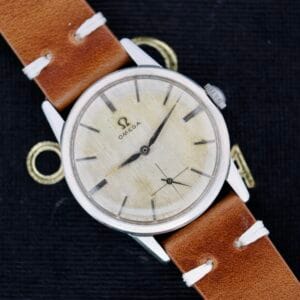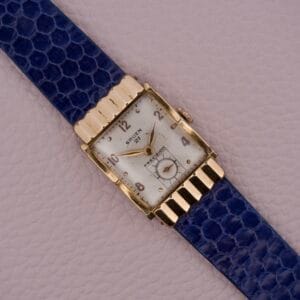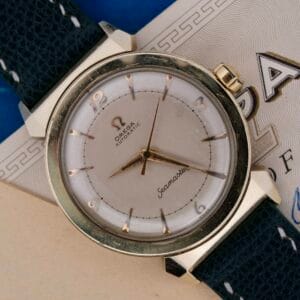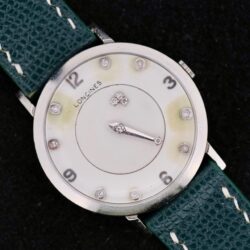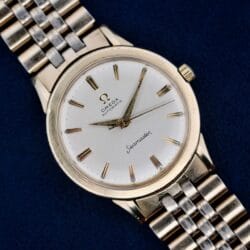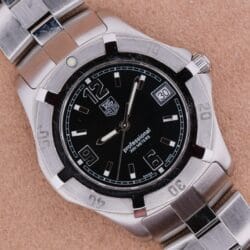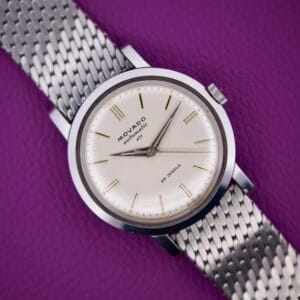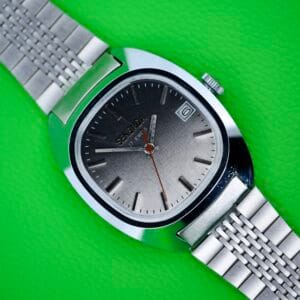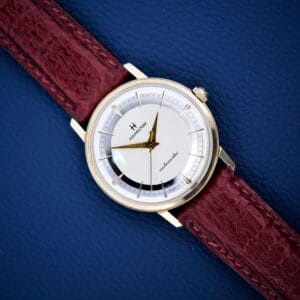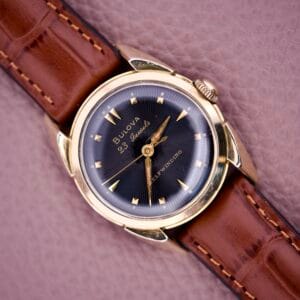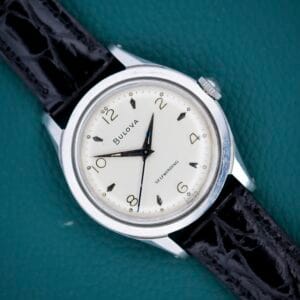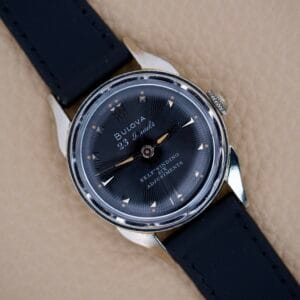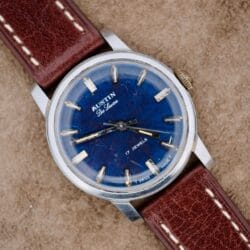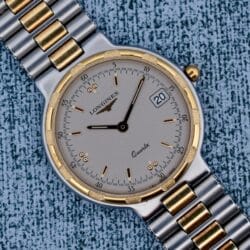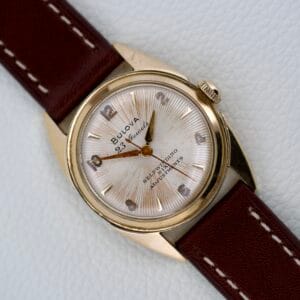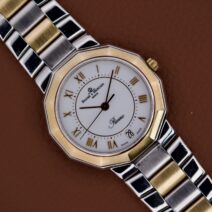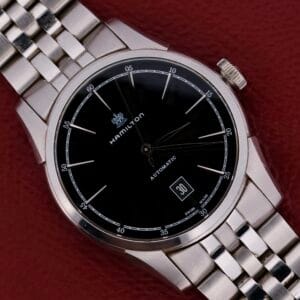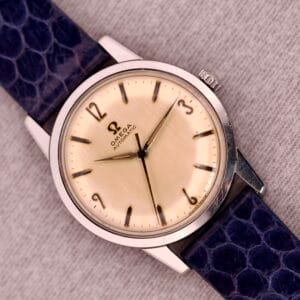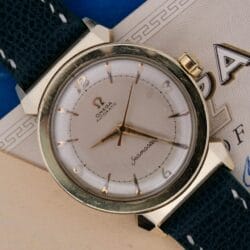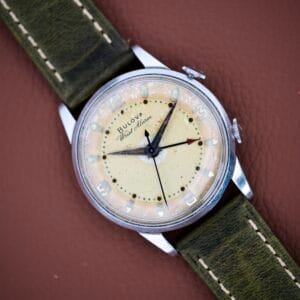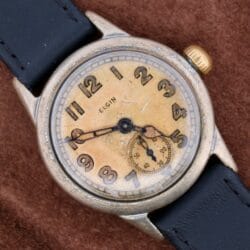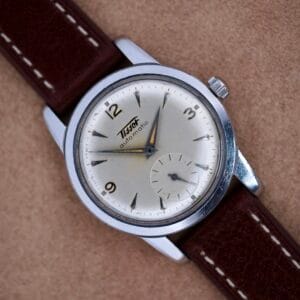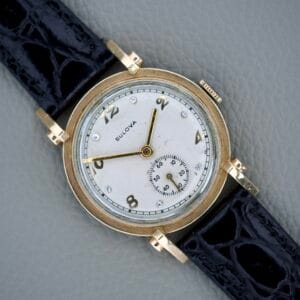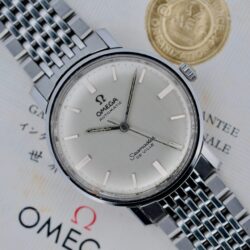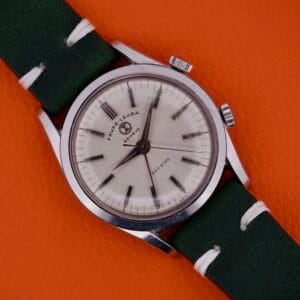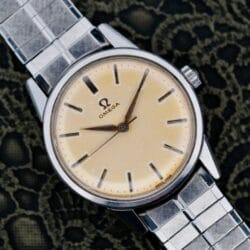There are certain mechanical complications that are just pure magic. In our hyper-connected digital world, a watch that can create a physical, audible buzz on your wrist is a special and deeply charming thing. The mechanical alarm is, in our opinion, one of the most romantic and genuinely useful complications of the 20th century, and this fantastic Favre-Leuba “Seabird” is a brilliant example of the genre.
Before we even get to the complication, let’s talk about the name on the dial. Favre-Leuba is a true giant of horology, the second-oldest registered watch brand in Switzerland, with a history stretching all the way back to 1737. In the mid-20th century, they cemented their reputation as masters of the robust tool watch, building incredibly tough timepieces for the most demanding environments on Earth. So when they decided to build a sophisticated alarm watch, they built it to last.
This “Seabird” from the 1960s is a fantastic and charismatic piece. Housed in a sharp, 34mm stainless steel case, its special function is immediately given away by the iconic twin-crown setup. The crown at 4 o’clock winds the watch and sets the time, while the crown at 2 o’clock is used to wind the separate mainspring for the alarm and set the desired time via an internal rotating disc. When the hour arrives, a small hammer strikes a post, creating a distinct buzzing sound and a tactile vibration on the wrist—a discreet personal assistant from a more elegant time. The handsome, vertically-brushed silver dial is clean and legible, with applied baton indices and sharp dauphine hands. And the caseback? It’s a work of art, with a deeply stamped, ornate brand crest that speaks to the quality and durability of the piece.

